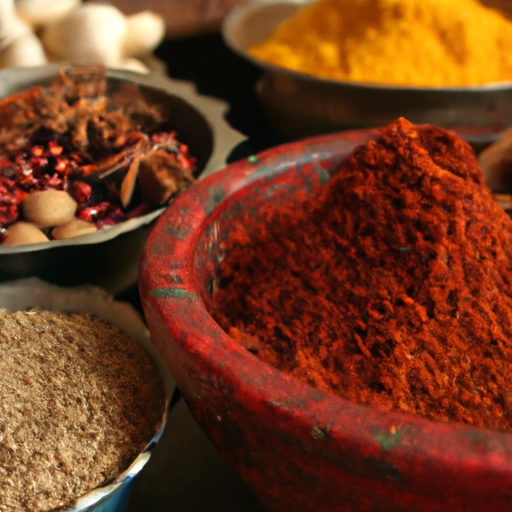Ras el Hanout
Description

Ras el Hanout is a complex, aromatic spice blend that is a staple in North African cuisine, particularly Moroccan cooking. The name 'Ras el Hanout' translates from Arabic to 'head of the shop,' implying that it is the best offering from the spice shop. Its ingredients can vary significantly from one spice shop to another, with some blends containing over thirty spices. Common components include cumin, coriander, ginger, turmeric, cinnamon, cardamom, paprika, nutmeg, and various dried, ground peppers. The precise mixture is often a closely guarded secret, adding to the mystical allure of this sought-after spice blend.
Common uses
Ras el Hanout is widely used to flavor meats, stews, and vegetable dishes. It can also be found in couscous recipes, tagines, and as a rub for grilled foods.
Nutritional value
Calories
Calories in Ras el Hanout vary depending on the specific blend, but it is typically low in calories, with about 4 to 6 calories per teaspoon (1-2 grams).
Protein
As a spice blend, Ras el Hanout contains trace amounts of protein.
Fat
Ras el Hanout is usually very low in fat, with less than 1 gram per serving.
Carbohydrates
The carbohydrates in Ras el Hanout are minimal, usually less than 1 gram per teaspoon.
Vitamins
Some spices in the blend, like paprika, can be rich in Vitamin A, while others may offer Vitamin C and other beneficial compounds.
Minerals
Minerals such as iron, magnesium, and potassium can be found in small amounts in Ras el Hanout, depending on the specific spices used in the blend.
Health benefits
Ras el Hanout may offer anti-inflammatory properties and aid in digestion due to the presence of spices like turmeric and ginger. The antioxidants found in the blend can also support overall health.
Potential risks
While Ras el Hanout is generally safe to consume, individuals with specific spice allergies or sensitivities should be cautious. Overconsumption can lead to gastrointestinal discomfort for some people.
Common recipes
Common recipes using Ras el Hanout include Moroccan tagines, couscous, grilled meats, and rice dishes.
Cooking methods
This spice blend is suitable for slow-cooking methods, sautéing, grilling, and roasting.
Pairing with other ingredients
Ras el Hanout pairs well with lamb, chicken, root vegetables, lentils, and grains like couscous or rice.
Summary
Ras el Hanout is a versatile and aromatic spice blend central to North African cuisine. With warming and complex flavors, it adds depth to a variety of dishes and offers potential health benefits due to its composition of spices. When used in moderation, it is a delightful addition to both traditional and modern recipes around the world.